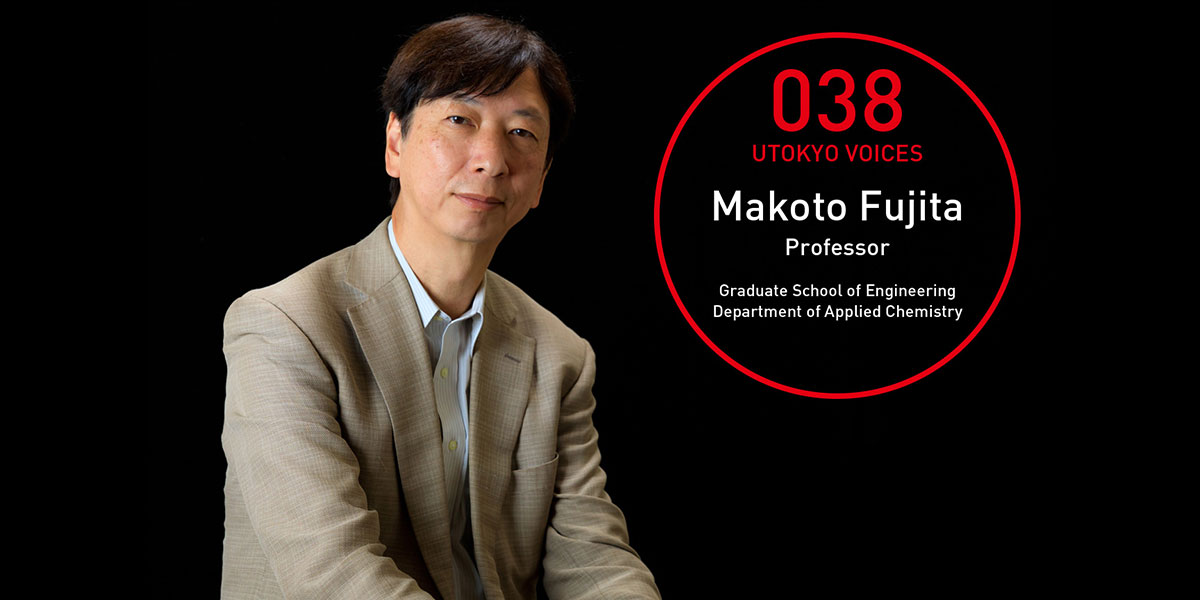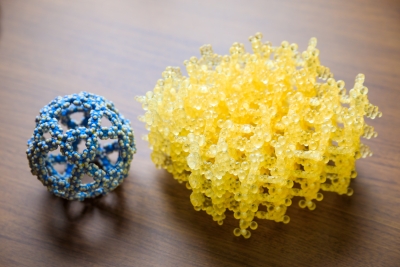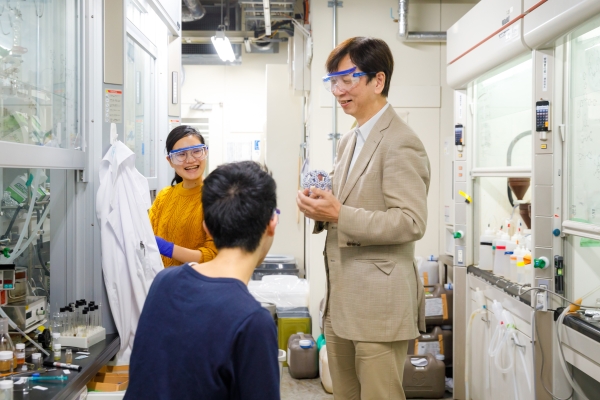A gourmet of perfection: Searching for the perfect moment|UTOKYO VOICES 038


A gourmet of perfection: Searching for the perfect moment
As an elementary school student, Professor Fujita was not interested in writing out kanji characters or memorizing historical facts. His passion was for math and science, where he could find answers by thinking for himself. Particularly fascinated by chemical change, he bought flasks and other equipment cheaply from his father’s friend’s shop, which sold apparatus for scientific experiments, and enjoyed conducting chemical experiments at home.
Since then, Fujita has devoted his life to chemistry. Uninterested in anything other than science, he entered Chiba University, which offered an entrance examination that did not include subjects such as social studies or classics.
Nevertheless, his subsequent life as a researcher was not uneventful. On deciding that he wanted to continue his research at university, he realized, once it was already too late, that Chiba University did not offer a doctorate under its new system. So, he became the first person to work at Sagami Chemical Research Institute with only a master’s degree. Fortunately, his supervisor had begun his career at the same institute, so was able to recommend him. While working, he completed his doctoral dissertation, which he submitted to Tokyo Institute of Technology, and succeeded in forging a career as a researcher.
During this time, he worked under four or five different supervisors before securing a job as an assistant at Chiba University. There he became involved, quite unexpectedly, in research in a different field. Through this experience he was able to see chemistry in a different light, which led to his subsequent achievements in the area of self-assembly generation of organic compounds.
Although mechanisms by which molecules spontaneously self-assemble can be seen in all kinds of biological phenomena, such as the double helix structure of DNA, Fujita discovered the self-assembly method as a new principle of chemical synthesis.
Conventional methods of chemical synthesis involved inducing chemical reactions and physical changes under high-temperature, high-pressure conditions; but with self-assembly, molecules accurately form molecular systems and exhibit specific functions at ordinary temperatures and pressures. This involves a weak interaction called the “coordination bond” in which groups of functionally similar molecules form weak bonds similarly to the hydrogen bonding seen in biological systems.
Then, in March 2013, he succeeded in developing the “crystalline sponge” three-dimensional lattice through self-assembly. Up until then, effort was needed to crystallize the target compounds for X-ray analysis, but the crystalline sponge invention enabled X-ray analysis to be performed easily, even on liquid compounds at room temperature, by absorbing the compounds in a crystalline sponge.
This revolutionary new method solved an intractable problem that had even been called the 100-year problem of X-ray crystal structure analysis. It made it possible to develop special chemical reactions that could not be achieved using conventional methods and to trap unstable materials, thus opening up completely new doors in manufacturing.
For Fujita, the interesting thing about research is that magical moment when you discover a new phenomenon, which, he says, when you acquire a taste for it, becomes addictive. Researchers who have never experienced the “perfect moment” are satisfied with average results, whereas those who “enjoy doing the kind of things that other people might consider excessive might travel across the world like a discerning gourmet in search of the perfect taste,” says Fujita.
As someone who has continued to blaze unexplored trails in research, Fujita finds chemistry gripping in that it opens up a world of manufacturing never before seen, including the development of completely new compounds that combine biomolecules and artificial molecules. Says Fujita: “While life science aims to understand life, chemistry, as a creative endeavor, is endless.”


Models of the crystalline sponge that solved the “100-year problem of X-ray crystal structure analysis,” made using a 3D printer. The atoms are divided into yellow and green, and the capsule frame and space inside it are immediately visible. The crystalline sponge is also expected to open up possibilities in manufacturing of the future.


[Text: Kagaku wa souzou no gakumon (“Chemistry is a creative discipline”)]
Fujita says, “The essence of science is ‘creating’ and ‘understanding.’” Within the sciences, biology and physics place importance on “understanding,” and only chemistry emphasizes “creation.”

Profile
Makoto Fujita
After completing a master’s degree at Chiba University Graduate School of Engineering, worked as a research fellow at Sagami Chemical Research Center, then as an associate professor at Chiba University Faculty of Engineering, and a professor at Nagoya University Graduate School of Engineering. Since 2002, has worked as a professor in the School of Engineering, University of Tokyo. In 2018, was appointed as a distinguished professor in the Division of Advanced Molecular Science, Institute for Molecular Science (IMS), National Institutes of Natural Sciences (concurrent position). Since 1990, has led the world in the field of self-assembly, establishing the crystalline sponge method in 2013 and contributing greatly not only to chemistry but also to research in biology and medicine. Has received numerous awards, including the Japan IBM Award, the Leo Esaki Prize, the Chemical Society of Japan Award, the Arthur C. Cope Scholar Award (ACS National Award), the Medal with Purple Ribbon, and the Wolf Prize in Chemistry.
Interview date: November 13, 2018
Interview/text: Tsutomu Sahara. Photos: Takuma Imamura.






